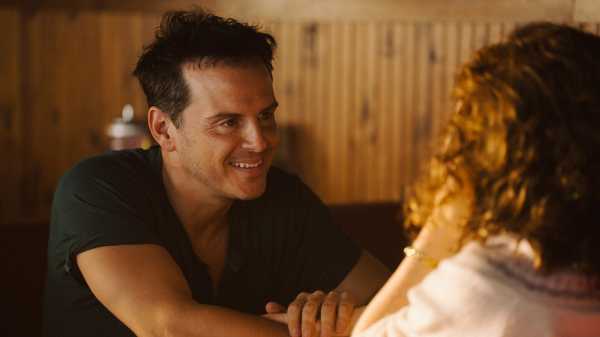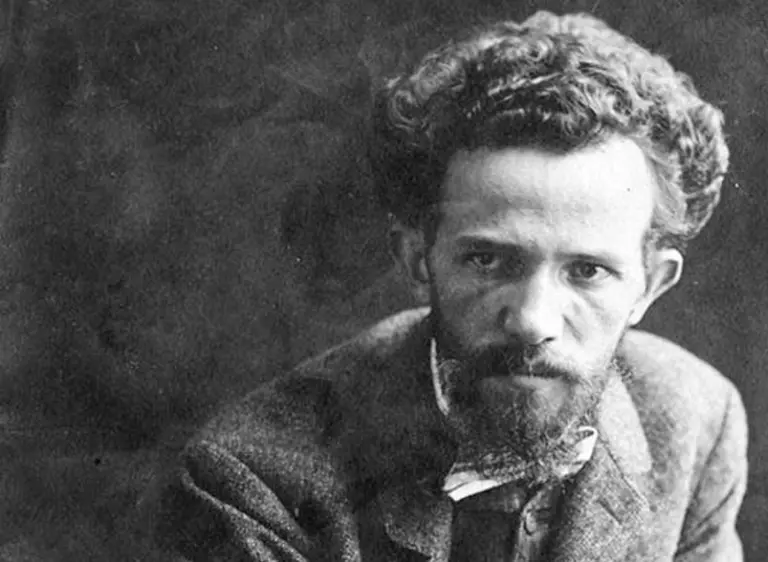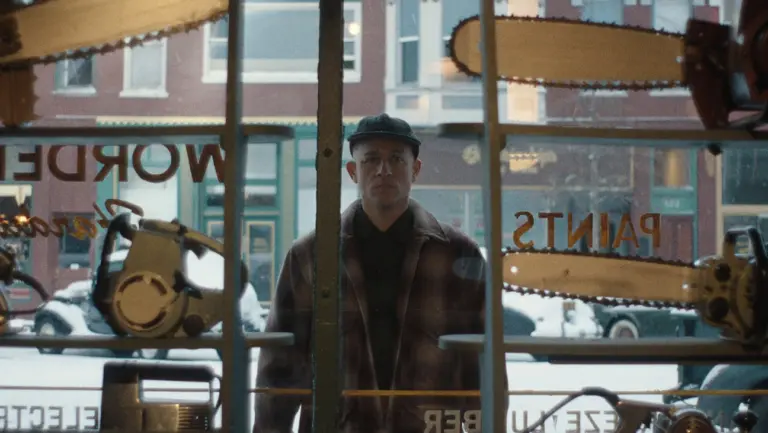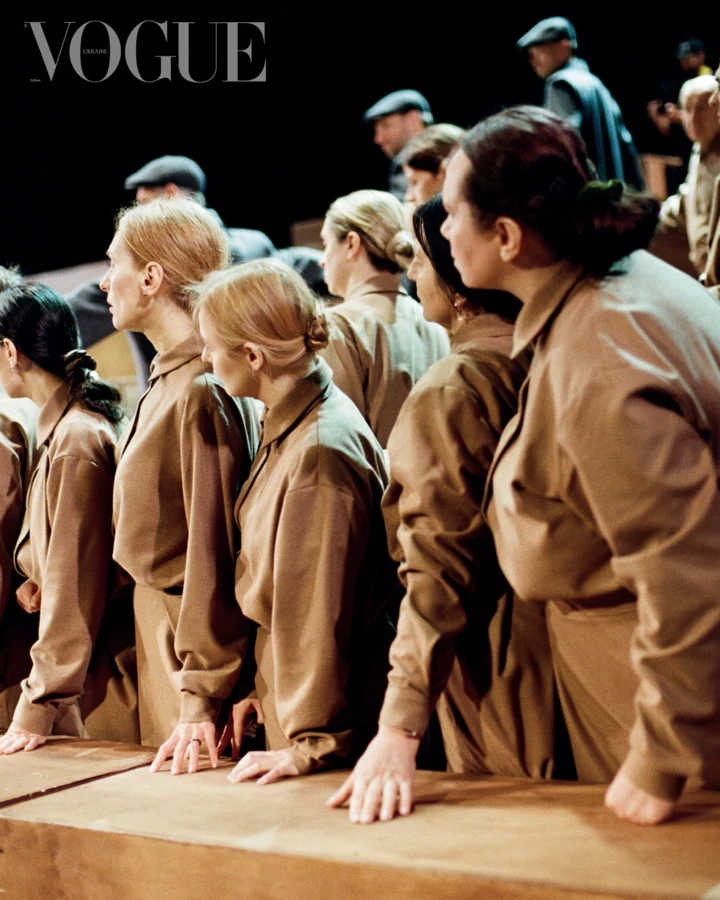
Save this storySave this storySave this storySave this story
In the British director Andrew Haigh’s earlier films—“Weekend” (2011), “45 Years” (2015), and “Lean on Pete” (2017)—the images did much less of the work than the script and the actors. There has been something literal about his filmmaking that undercuts the intense emotion of the stories he films. His new movie, “All of Us Strangers,” is a little different and a lot better. The fact that it’s a kind of ghost story, a drama centered on fantasy, spurs Haigh to shoot in a way that conveys a distinctive, alternate realm of experience. Even if one didn’t know that he has strong personal associations with the story (and I didn’t, until after I’d seen the film), it’s clear that the confluence of this private investment and fantastical elements of the narrative impart new tone and shape to Haigh’s image-making. If his previous films have felt like mere renderings of their scripts, this one is a genuinely cinematic experience.
“All of Us Strangers” is a filmmaker’s movie—or, rather, a screenwriter’s one. That’s the job of the protagonist, Adam (Andrew Scott), and, when the action begins, he’s struggling with it. Living alone in a high-windowed flat, keeping the TV on for distraction and inspiration, moving from the blank screen of his laptop to the snoozy refuge of his sofa, Adam is enduring writerly frustration, heightened by the subject he has taken on: his own past, his own family. And his current circumstances are inflicting a deeper solitude: a single gay man, he lives in a new apartment tower with few other tenants. He does catch a strange glimpse of one, however, when, during a building-wide fire alarm, Adam goes outside half-dressed in the middle of the night. Looking up at a lighted window, he notices a neighbor who refuses to budge from his sixth-floor apartment. When Adam goes back home, he gets a knock on the door from that neighbor, Harry (Paul Mescal), who comes bearing a bottle of whiskey, but Adam sends him away.
So far, so literal, but there’s something slightly oneiric about this conjunction of slight odd events that places the action in the register of the uncanny. When Adam gets back to his script, with its scene heading “EXT. SUBURBAN HOUSE 1987,” he’s in the paradoxical position of being too much inside his own head and not being in it deep enough. To jog his inspiration and reinvigorate his memory, he watches a video of Frankie Goes to Hollywood and rummages through a box of childhood memorabilia. Gazing out the window of his flat at nearby train tracks, he is impelled to hunt for his past in person, taking the train to his boyhood home, in Sanderstead, a suburb of London. There, at the window of the house where he lived, he sees a child; in a nearby park, he encounters a man who invites him home—his father (Jamie Bell). There, at the house, Adam’s mother (Claire Foy) is waiting for him, too. Both parents are apparently the age they were in 1987, when Adam was eleven. Spoiler alert: his parents were killed following a car accident on Christmas of that year. The essence of “All of Us Strangers” is Adam’s reconnection with them, sharing stories of his life since then and also things they didn’t know about his childhood self.
Once Adam reunites with his parents—who, movingly, appear to be younger than their fortysomething son—he is seemingly addicted to the experience, making ever more frequent and urgent trips to their home. They seem to be middle-class people with little knowledge of the arts, and are impressed that he has become a writer. (His self-deprecating view of screenwriting—saying he’s “not a proper writer”—plays like a director’s wink.) Momentously and affectingly, Adam comes out to them. His conversations with each of them, separately, reveal, with a sociological precision that’s dramatically impassioned, the changes in British legal and social attitudes toward homosexuality. His mother is surprised to know that Adam faces no harassment and can marry another man and raise children; dying while the AIDS crisis was raging, she is surprised to learn that the disease is manageable; when Adam talks of the bullying that he endured growing up, his father admits that, as a schoolboy, he would have been among the bullies. As Adam keeps returning to Sanderstead, he soon moves from merely recollecting his childhood toward reënacting it, with his parents’ enthusiastic participation—snuggling in bed between his parents when he can’t fall asleep, coming downstairs in his pajamas on Christmas Day, heading out to his favorite restaurant.
These phantasmagorical sequences, filmed with a bracing realism that renders the fantasy all the more poignant, make “All of Us Strangers” a sort of “It Wasn’t Always Such a Terrible Life”—a Christmas movie whose protagonist is able to extract from the workaday banalities of his childhood the loving devotion that lay beneath, and to bring it to the fore in the place of enduring traumas. Adam, ever the screenwriter, performs a brilliant editing job on his life, cutting out decades of agonized relationships and even normal conflicts. By seeing the details of his adolescence in the light of the life that he has led and by encountering his parents not as authority figures but as near-contemporaries, Adam alchemically transforms a troubled childhood into gold.
I didn’t know, until after seeing the movie, that Adam’s old home is filmed in the house where Haigh himself grew up. (Happily, his parents are still alive, though.) But the intensity of Haigh’s bond to the ghosts of childhood is apparent from the stuff of the movie itself, including subtly transformative images that are new to his cinematic vocabulary. The cliché of following the back of a character’s head to see what he sees suddenly seems fresh again, because being left to imagine Adam’s astonished gaze is more powerful than any performance could be. Haigh makes ordinary closeups convey more than mere emphasis by means of striking, painterly disproportions between foreground and background; even Adam’s adult height, in a town and a household that he’d always seen from a child’s viewpoint, is framed as conspicuously strange and disconcerting. Meanwhile, the scene in which Adam’s ghostly parents come into contact with the world outside the house offers one of the year’s best coups de cinéma.
There’s another aspect to “All of Us Strangers” that both expands the story far beyond the familial and launches it into an altogether different realm of wish-fulfillment. After the initial freeze-out, Adam’s neighbor Harry gives him a second chance, knocking on his door again. This time, Adam invites him in, and the two men begin a romantic and sexual relationship, in the course of which they discuss their family backgrounds. With the subject broached, Adam is inspired to bring Harry out to Sanderstead to meet his parental apparitions—yet another extraordinary twist in the movie’s metaphysical fantasy.
Unfortunately, this is where Haigh cannot transcend the limitations of his previous work. It wasn’t only the images in his three widely released features that seemed insufficient; in each, the central relationships were deftly sketched but thinly defined. The relationship that develops between Adam and Harry suffers in the same way. When they discuss their childhood, it is in numbingly general terms, long on psychologizing but short on animating detail. The scenes of Adam and Harry together, for all their warmth, are as slightly rendered as those with his parents are dramatically rich, and the power of Haigh’s direction dwindles to match. No point in giving away the last pieces in the movie’s puzzle, but Harry and Adam’s bond is a screenwriter’s relationship, pared down to its function in the plot and to its connection with Adam’s prime realm of fantasy—the appearance of his parents. What’s missing from the film is the spark that leaps the gap from imagination to reality. For all its droll shading of the screenwriter’s art, “All of Us Strangers” is a screenwriter’s movie, in which the power of intention over observation, of the blueprint over the finished product, is asserted with a vengeance. ♦
Sourse: newyorker.com







